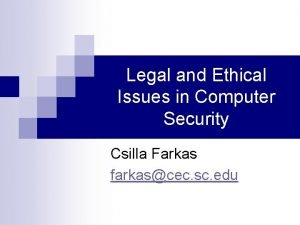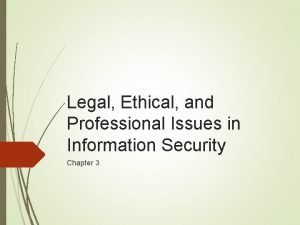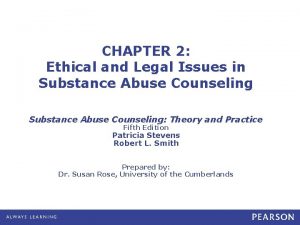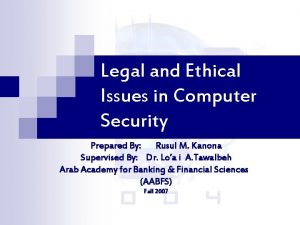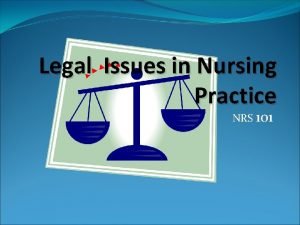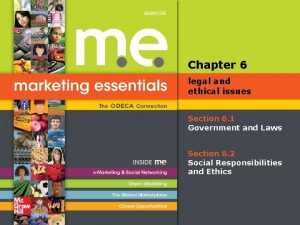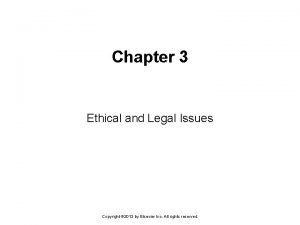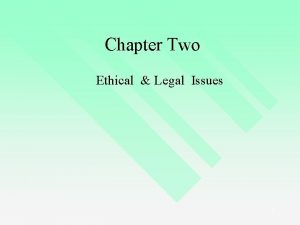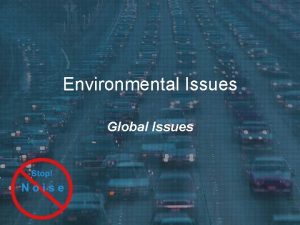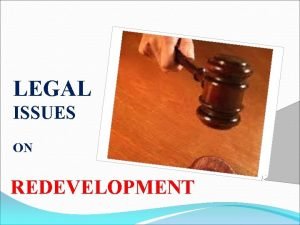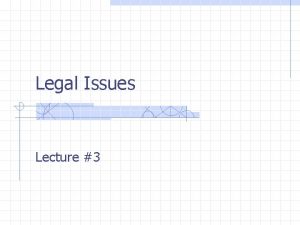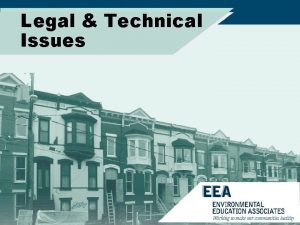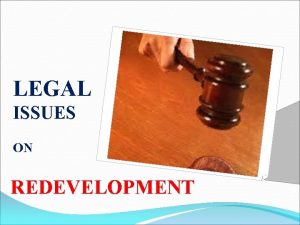Legal Issues in Connecticut Environmental Issues 2006 Connecticut








- Slides: 8

Legal Issues in Connecticut: Environmental Issues 2006 Connecticut Commercial Real Estate Conference November 9, 2006 Andrew N. Davis, Ph. D. , Esq. (860) 293 -3514 adavis@llgm. com

Environmental Risk Considerations · · Federal and state laws impose responsibility and liability (clean-up, thirdparty personal injury and third-party property damage) associated with a property’s environmental conditions on its owners and operators (past, present and future) and lenders through foreclosure. Ø No one wants to be in the chain of title. Legal liability can stem from on-site and off-site, known and unknown environmental conditions. Consideration must be given to the historical use of hazardous substances and historical disposal of hazardous waste. Ø Environmental liabilities run with the land. 2

The Environmental Insurance Tool · Pollution Legal Liability (“PLL”) Insurance Ø On-site and off-site clean-up. Ø Third-party bodily injury and property damage claims. Ø Non-Owned (off-site waste disposal) locations coverage. · Stop Loss/Cost Cap Insurance Ø Address uncertainty of cost of actual remediation. Ø “Boxes in” potential risk -- covers cost of remediation that exceeds anticipated costs. 3

The Environmental Insurance Tool (cont’d) · Liability/Risk Transfer Strategy Ø Transfer all liabilities associated with known and unknown environmental conditions (e. g. , clean-up obligations to governmental authorities; third party property damage claims; third party toxic tort liabilities) to a contractor backed by a uniquely manuscripted, long-term, comprehensive environmental insurance program. Ø Pay third parties (insurers/remediation contractors) to take all the liability associated with environmental risk. Ø Essentially takes the “environmental problem” out of the transaction and allows the real estate transaction to proceed as if the property is clean. 4

Recent Changes to the Connecticut Transfer Act (C. G. S. §§ 22 a-134 et seq. ) · Public Act No. 06 -76 (effective October 1, 2006) Ø A certifying party may submit a verification by a licensed environmental professional (“LEP”) when a “portion of an establishment” (e. g. area of concern by area of concern) has been remediated. v When remediation of the entire establishment is complete, the certifying party may include and rely upon a verification for a portion of the establishment that had been previously submitted by an LEP. Ø Provisions regarding the renewal of an LEP license and the qualifications to be an LEP have been revised. Ø Two New Exemptions: v Facilities that solely generate universal waste (e. g. , batteries and pesticides). v Conveyance of a unit in a residential common interest community. 5

Natural Resource Damage Programs · Nationally: Natural resource damage programs are popping up all over the country. For example: Ø The New Jersey DEP is committed to restoring injured or lost natural resources through its Office of Natural Resources Restoration. Ø Montana’s Natural Resource Damage Program within Montana’s DOJ has been performing natural resource damage assessments since 1990 and pursuing the lawsuit against the Atlantic Richfield Company. · Ø New Mexico’s Office of Natural Resources Trustee assesses injury to natural resources caused by the release of hazardous substances or oil and seeks compensation from responsible parties for the restoration of injured resources. Connecticut: The CTDEP Bureau of Natural Resources is comprised of the Forestry, Fisheries, and Wildlife Divisions who manage and regulate the State’s natural resources as well as educate the public and enforce conservation laws. No specific new NRD program is expected at this time. 6

Natural Resource Damages: The Basics · Natural resources include: Land, fish, wildlife, biota, air, water, · Natural resource services include: The physical, chemical and · Natural resource damages: The dollar value of restoration for groundwater, drinking water supplies, and other such resources that are held in trust for the public. biological functions that natural resources perform. injury to, destruction of, or loss of natural resources, including the reasonable costs of a damage assessment as a result of a discharge. 7

NRD Advice for Real Estate Transactions · · · Define challenges through proper due diligence – focus not just on remediation. Ø Attention to historical uses (and “abuses”) of property. Work with experienced NRD consultants. Understand that NRD costs can be extremely high. Ø Reasonable cost of damage assessment. Ø Compensation for interim loss pending recovery. Ø Cost of restoring the injured resources (or a proxy) to baseline. 8
 Wireless health
Wireless health Ethical issues in computer security
Ethical issues in computer security Legal and ethical issues in information security
Legal and ethical issues in information security Ethical and legal issues chapter 2
Ethical and legal issues chapter 2 Legal and ethical issues in computer security
Legal and ethical issues in computer security Legal issues in nursing practice
Legal issues in nursing practice Chapter 6 legal and ethical issues
Chapter 6 legal and ethical issues Chapter 3 legal and ethical issues
Chapter 3 legal and ethical issues Chapter 2 ethical and legal issues
Chapter 2 ethical and legal issues

